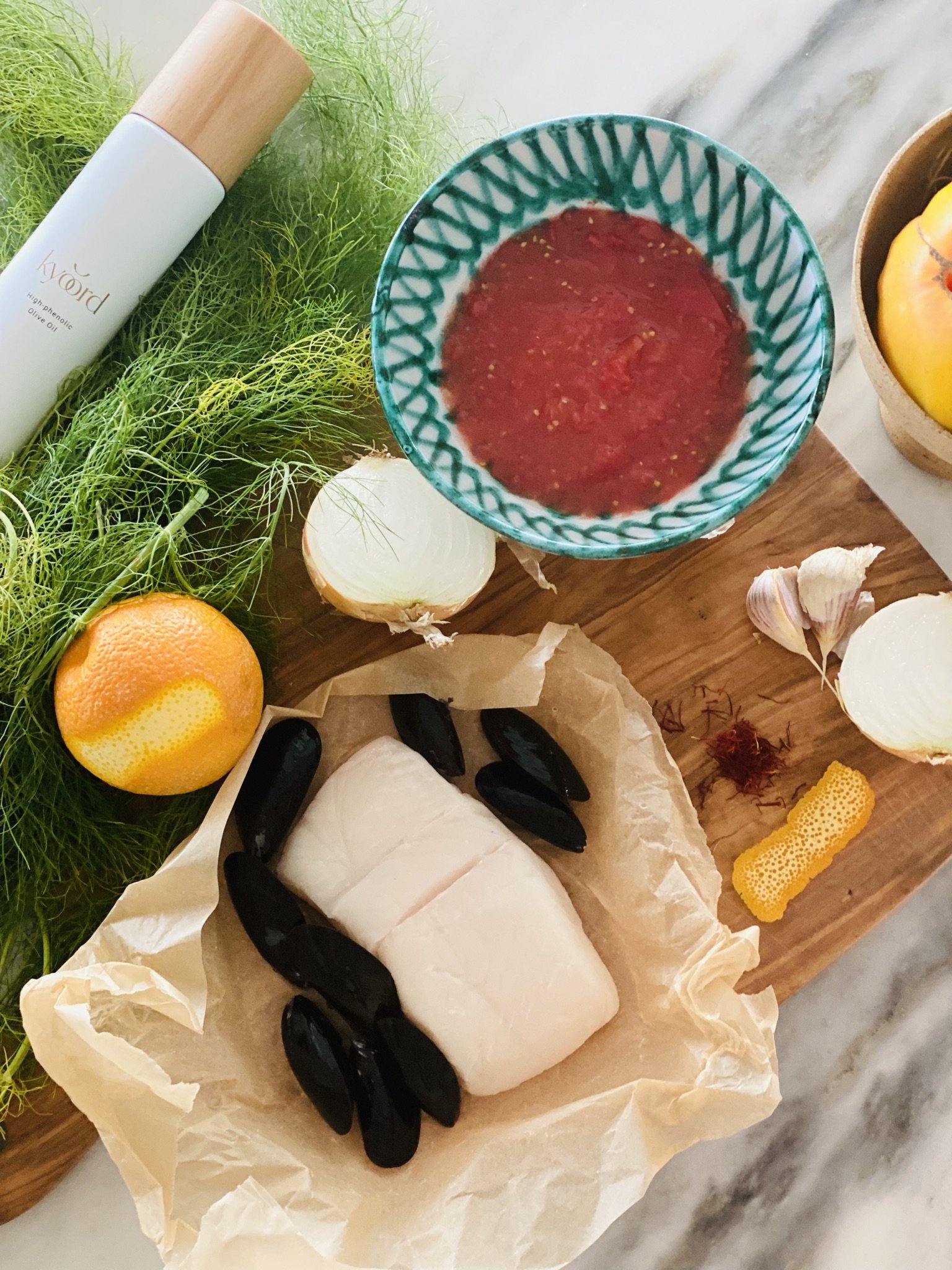Pesce All’Aqua Pazza
I adore the name of this recipe for many apparent reasons. First, it translates to Fish in Crazy Water because fishermen may have used seawater for the cooking liquid.
Secondly, many clients ask if there are shortcuts to home-cooked meals, with easy last-minute techniques that can inspire any weekday meal without going crazy.
Poaching and Stewing
Yes, there is. These techniques are as old as the ages, one that requires few dishes, no equipment other than a stove, and are healthy.
To poach is to simmer food in liquid until it is steamed. It is a gentle and gradual way to cook, fitting for delicate foods such as eggs, fish, and fruit. Poaching allows the protein in the food to cook without losing moisture.
Stewing is loosely defined as cooking meat, fish, or vegetables in moist heat, a process by which food is allowed to simmer in a flavorful liquid. Braising is very similar. Therefore, one-pot provides two easy and healthful cooking methods! The significance of soup, stews, and braising offers us an abundance of nutrients with taste and textures to make any cold winter day a warm culinary adventure.
Choosing the right foods for your unique nutritional needs is part of eating healthy, but how you prepare that food also plays a role.
Regarding the nutritional appeal of poaching and stewing, Dr. Catherine Shanahan explains in her groundbreaking book Deep Nutrition “that slower cooking temperatures help reduce chemical reactions among amino acids, creatines, and sugars, which prevents the production of dangerous compounds; that can damage our DNA.”
You can read about AGEs and a Moroccan Beef Stew recipe here.
Pesce All’Aqua PAZZA
Adapted by the NYTimes Cooking app recipe by Marcella Hazan
I adore this recipe for many reasons. It is simple, healthy, tasty, and ideal for the Christmas Eve celebration feast of the SEVEN Fishes.
Ingredients
1/4 cup extra virgin olive oil KYROOD
3 garlic cloves, thinly sliced
1/2 fennel seeds
1 small fennel bulb, halved and diced
2 fillets of anchovies
Pinch of red pepper flakes plus more as needed (omit for AIP friendly)
1 bay leaf
28-ounce canned whole peeled tomatoes, preferably San Marzano.*Pureed in Blender.
1/2 cup of pure filtered water or white wine (depending on dietary preference)
4 (4-ounce) fillets firm or medium-firm white fish, like sea bass, fluke, or sea bream
1-pound cockles or mussels
Pinch of saffron (optional)
Preparation
In a large skillet with high sides, combine the EVOO, garlic, fennel seeds, chopped fennel, anchovies, and red pepper flakes (if using). Set over medium-low and occasionally cook until sizzling and fragrant, 3 to 5 minutes.
Add 1/2 cup water, the tomatoes, and a pinch of salt to the skillet. Bring to a boil over high, then cover, reduce heat to medium, and cook until the tomatoes softened and the water is bright red with a deep umami flavor, about 15 to 20 minutes.
Pat the fish dry and season with salt. Lay the fish into the tomato water, cover, and poach gently, so your fish does not dry out and become chewy. If you are using shellfish, this is the time to add it to the pot. Cover and simmer until the fish is opaque and the shellfish is open.
Taste the tomato water broth and adjust seasonings to your palate preference with additional red pepper and parsley. If the liquid has reduced so much that it resembles thick sauce, add warm water or a jar of clam juice until it looks brightly tinted and brothy. Serve in shallow bowls with an extra drizzle of olive oil and your choice of bread for dunking.
*Cook’s notes:
Read about the meaning of D.O.P. San Marzano Tomato here.
Summer ripened tomato vs. Canned Tomato: The original recipe calls summer vine-ripened tomatoes. Usually, the tomato holds a lot of water, but when the weather turns to winter, I adjusted the recipe to use canned tomatoes. Use your senses to develop the consistency you desire for your tomato broth by adjusting the liquid and seasonings accordingly. Go PAZZA with this aromatic and delicious dish.
FOR AIP FRIENDLY NOMATO SAUCE recipe here.
A nomato sauce is a nightshade-free marinara sauce that’s made without tomatoes. It’s AIP compliant, Whole30, Paleo, and sugar-free.


